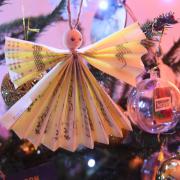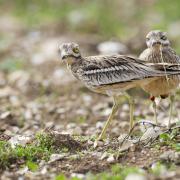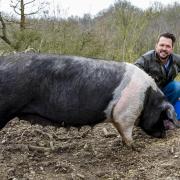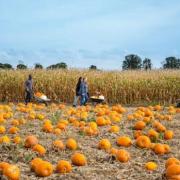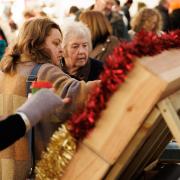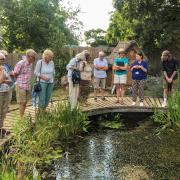Imagine this. It’s a warm and sunny spring day in Suffolk and you decide to make the most of the splendid weather by taking a countryside walk. While strolling along a footpath you hear the twittering of excited baby birds being fed in a nearby nest. There’s nothing quite like hearing that sound to know that spring is in full swing. But did you know that over half of our most threatened breeding bird species choose to nest on or near the ground?
More people than ever are enjoying the benefits that spending time in the countryside offers for our health and wellbeing. Yet for ground nesting birds this can cause extra pressure during breeding season, when the places they nest become busy with visitors who often don't realise birds may nest on the ground.
Our threatened species are already under increasing pressure due to things like habitat loss, predators and climate change, but there’s one simple step you can take to help keep them safe too, just by watching where you walk.

Almost every natural place in the English countryside can be home to ground nesting birds. From shingle shores to heather filled heathlands, woodland edges to farmland fields. Nesting on or near the ground at these sites can create huge challenges for birds when raising a young brood.
In Suffolk we are very fortunate to have birds such as the Skylark, Ringed Plover, Little Tern, Nightjar and Lapwing found at different spots across the county, but these ground nesting species are under increasing pressure.
Birds that choose to nest this way often have nests, eggs and markings that are extremely well camouflaged - which is nature’s way of trying to protect them. The Skylark nests on open land, often farmland, and their eggs can be as small as 17mm; that’s around the width of a 5p piece. When those eggs hatch, if a chick feels scared its natural instinct is often to stay quiet and avoid detection which means that if we aren’t being careful about where we walk, we may not see them.
The good news is that it’s very simple to give these birds the space they need during the breeding season in Suffolk to help give them the best chance of survival.

HERE’S A FEW TIPS ON WHAT YOU CAN DO TO HELP
• Stick to public footpaths in the countryside as ground nesting birds will choose to nest away from busy pathways.
• If you see or hear an adult bird calling out in distress or trying to catch your attention when out walking, back away to help protect nests from being disturbed. Move as quietly and quickly as possible as birds calling out in distress can also attract predators.
• Keep dogs close to you on lead when walking through countryside and along beaches during breeding season (March to August) as dogs running through nesting sites can cause disturbance leading to adult birds deserting their nests temporarily or permanently, leaving fledglings to get cold or die.

• Be vigilant and observant walking along beaches as some bird's nest near the tides edge.
• Discarded cigarettes or barbecues can cause wildfires on land suitable for ground nesting birds, so always dispose of these safely and protect the environment.
The RSPB works closely with landowners, partners and communities to protect ground nesting birds and wildlife across its nature reserves and in the wider countryside in Suffolk and beyond. To find out more about RSPB reserves near you, or to help fund the vital work it does to raise awareness and protect wildlife, visit www.rspb.org.uk

5 ground nesting birds you can help in Suffolk by watching your step
Skylark
Lapwing
Ringed Plover
Little Tern
Nightjar




